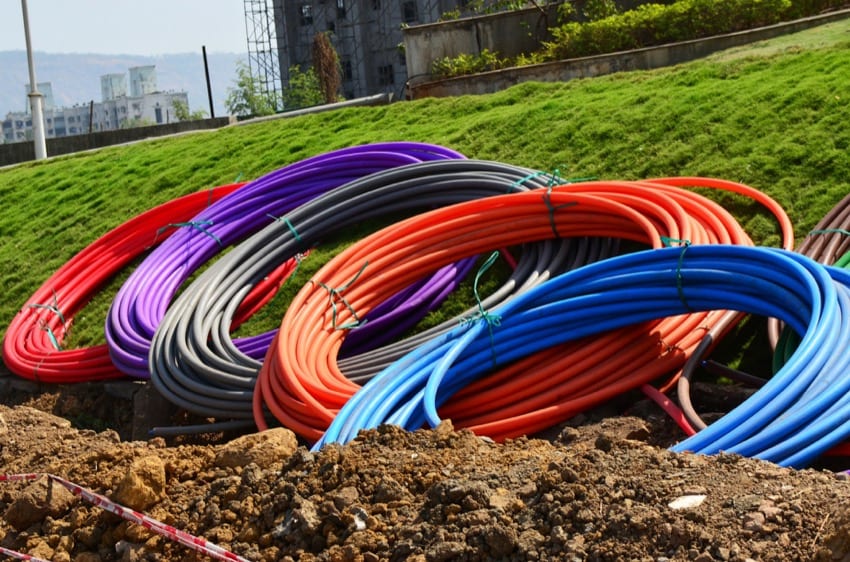As an electrician or apprentice, you will have conduit as a constant companion throughout your career. Getting familiar with them can quickly advance your learning curve. But what exactly are all the various electrical conduit types and fittings? We’ll help you answer those questions in this edition of Training the Apprentice.
The Many Types of Electrical Conduit
What is Electrical Conduit?
In general, conduit is a channel or pathway that can apply to many different areas. Roadways can be traffic conduits, ditches can be conduits for water, websites are a conduit for information.
When we’re talking about electrical conduit, we’re talking about the physical pathways you create in order to run wiring in a building. They serve to guide and protect wiring.
There are several different types of conduit you may use over the course of your career, and you’ll find specific details of how and when to use it in the National Electrical Code and other state and local building codes.
It’s All About Pathways
The basic idea is that you’ll create a logical pathway from the box to every point in the building that requires electricity in a way that is almost completely hidden once the walls and ceilings are in place. There may be some conduit that remains visible on the exterior of buildings, in open ceiling structures, electrical rooms, and others.
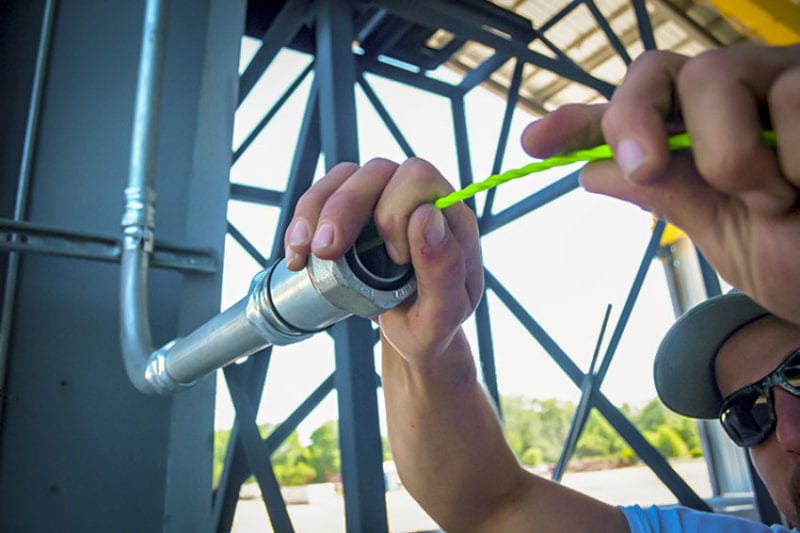
Once you install the electrical conduit paths, you pull wire through them to your termination points.
Electrical Conduit Types and Acronyms
You’ll hear several acronyms tossed around when you’re talking about types of electrical conduit along with terms like “rigid” and “flexible”. Here’s a breakdown of the most common types of electrical conduit.
RMC: Rigid Metal Conduit
RMC stands for “rigid metal conduit”. It’s one of the most heavy-duty types of electrical conduit and uses galvanized steel for its construction. As an outdoor-friendly conduit, it provides outstanding protection from environmental and physical damage. It’s also capable of providing structural support for boxes, cables, and other electrical equipment.
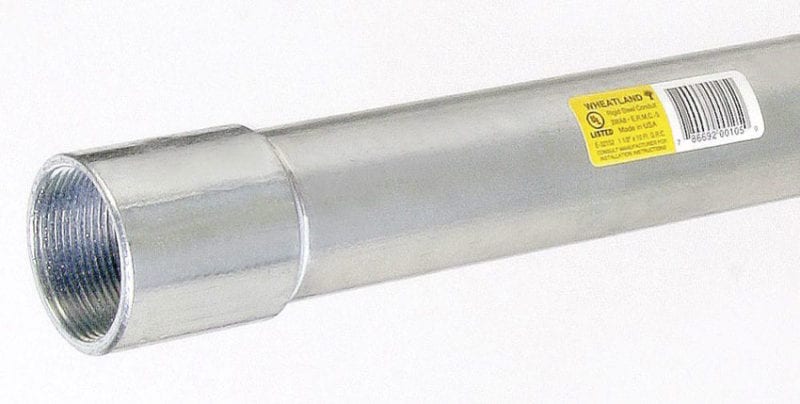
- Typical Fastening Style: Threaded
- Common Sizes: 1/2″ – 2-1/2″
- Common Applications: Outdoor installations
IMC: Intermediate Metal Conduit
Intermediate metal conduit (IMC) is a toned-down version of RMC that’s thinner and lighter. Even though it’s not as thick, it’s typically approved for all of the same applications as RMC. Given the choice between the two, our electricians prefer IMC simply because its lighter weight makes it much easier to deal with.
- Typical Fastening Style: Threaded
- Common Sizes: 1/2″ – 2-1/2″
- Common Applications: Outdoor installations
EMT: Electrical Metallic Tubing
Around our Pro team, EMT is the most common term thrown around when we’re talking about types of electrical conduit. Some of the new guys and gals use it as a catch-all term for all metal conduit, but that’s not actually correct.
EMT stands for “electrical metallic tubing” and is a type of rigid metal conduit. You normally see it made from galvanized steel and it also shows up as aluminum in some cases.
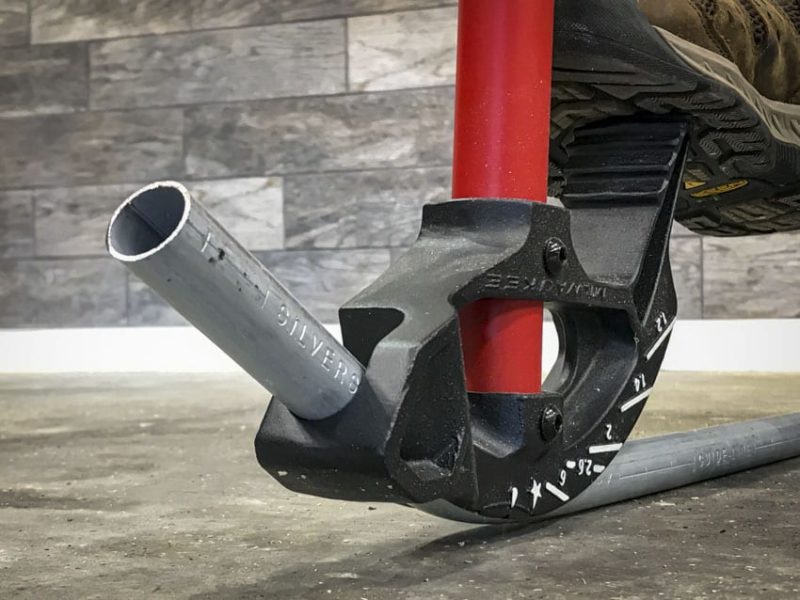
As a thinner metal tube, it’s easy to bend and kink. When you’re installing EMT, you use a conduit bender to make your bends without kinking and a compact or 12V reciprocating saw with a high TPI blade is all you need to cut it.
- Typical Fastening Style: Compression
- Common Sizes: 1/2″ – 1″
- Common Applications: Residential and light commercial indoor (watertight fittings required for outdoor use)
FMC: Flexible Metal Conduit
Way back before most of us were born (the early 1900s), Harry Greenfield invented a flexible metal conduit (FMC). Using steel or aluminum for construction, it has a distinct spiral look to it that allows it to flex over short distances much easier than EMT. It has a big advantage when you need to add conduit in tight spaces or around existing equipment.
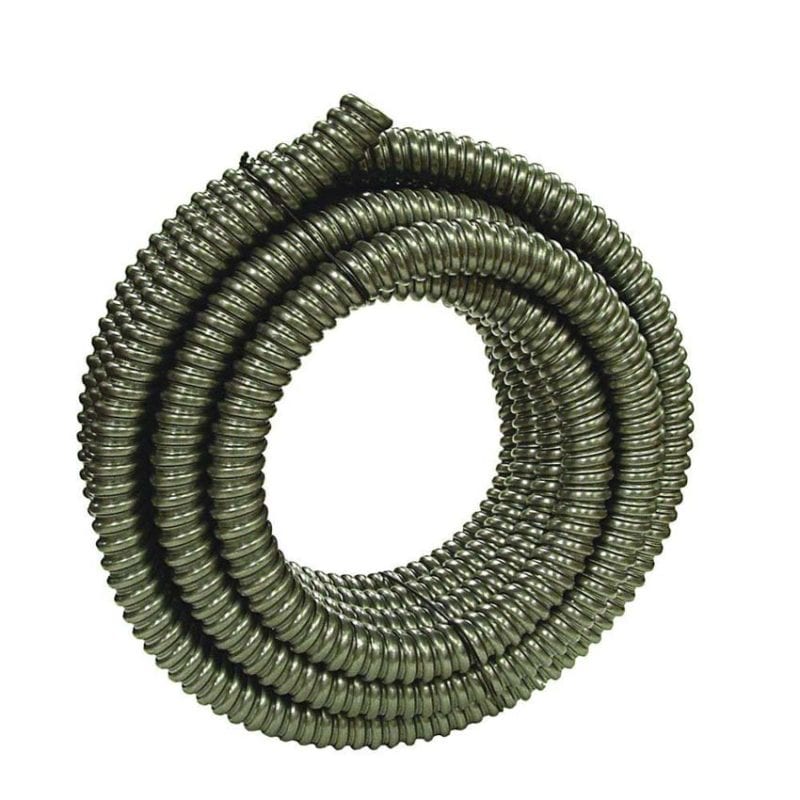
- Typical Fastening Style: Threaded
- Common Sizes: 1/2″ – 4″
- Common Applications: Indoor
LFMC: Liquid-Tight Flexible Metal Conduit
LFMC, or liquid-tight flexible metal conduit, is similar to FMC but covered in a waterproofing coating. It’s useful for outdoor applications and wet interior areas and requires fittings that are also watertight.
- Typical Fastening Style: Threaded
- Common Sizes: 1/2″ – 4″
- Common Applications: Outdoor and indoor wet areas
ENT: Electrical Non-Metallic Tubing
Electrical non-metal tubing (ENT conduit) is different from the other types of electrical conduit we’ve discussed so far in several ways. It’s a flexible PVC tubing that looks a lot like a pool hose.
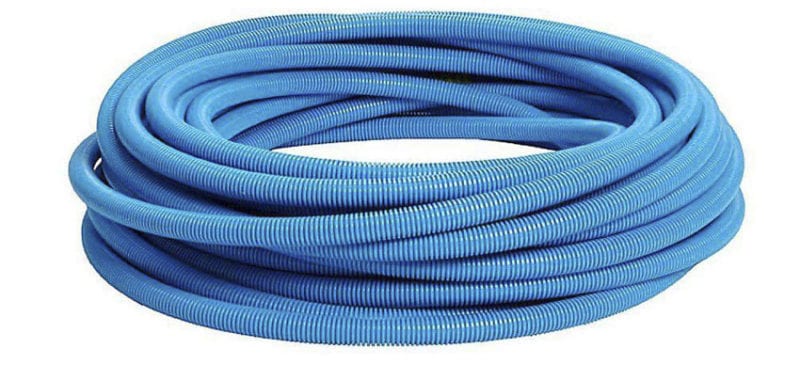
You can encase it in concrete, run it behind walls and under floors, and use it as a replacement for EMT. The major manufacturer for ENT uses 2-hour fire resistant rated materials. ENT is not UV-resistant, though, so using it where it will be exposed to UV rays is out.
- Typical Fastening Style: Snap-lock or glue
- Common Sizes: 1/2″ – 2″
- Common Applications: Indoor
Rigid PVC Conduit
Rigid PVC is a very familiar material to many folks thanks to its similarities to the PVC we use in plumbing and irrigation. Unlike EMT, you can’t use a conduit bender to manipulate it. PVC needs to be heated before in order to bend it. Typically that happens using a heater box but you can use a heat gun as an alternative in the field.
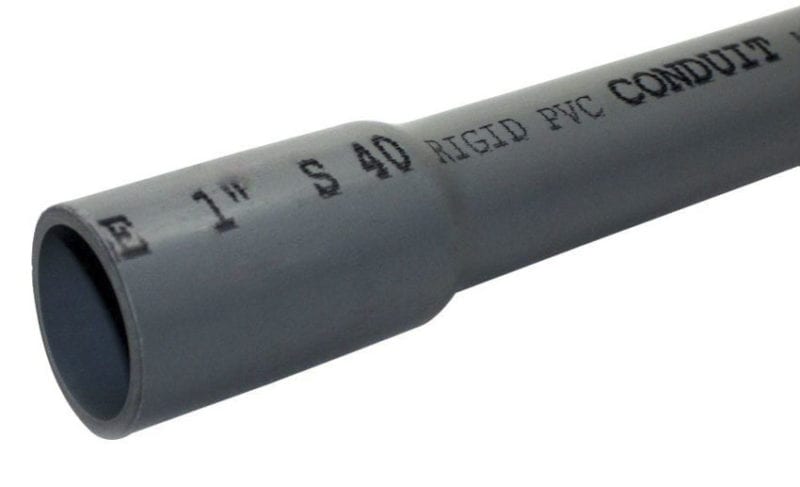
As a conduit, rigid PVC shares the same characteristics as water pipe: you glue it together and it’s water-tight when you install it correctly. That makes it useful for direct burial underground and it’s allowable in corrosive environments. You can also encase it in concrete, conceal it in walls, or leave it exposed.
- Typical Fastening Style: Glue
- Common Sizes: 1/2″ – 5″
- Common Applications: Outdoor, indoor, underground

